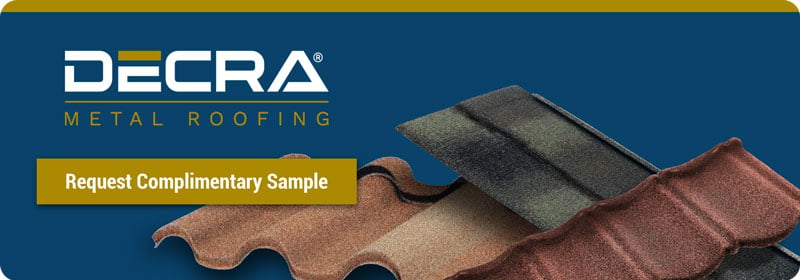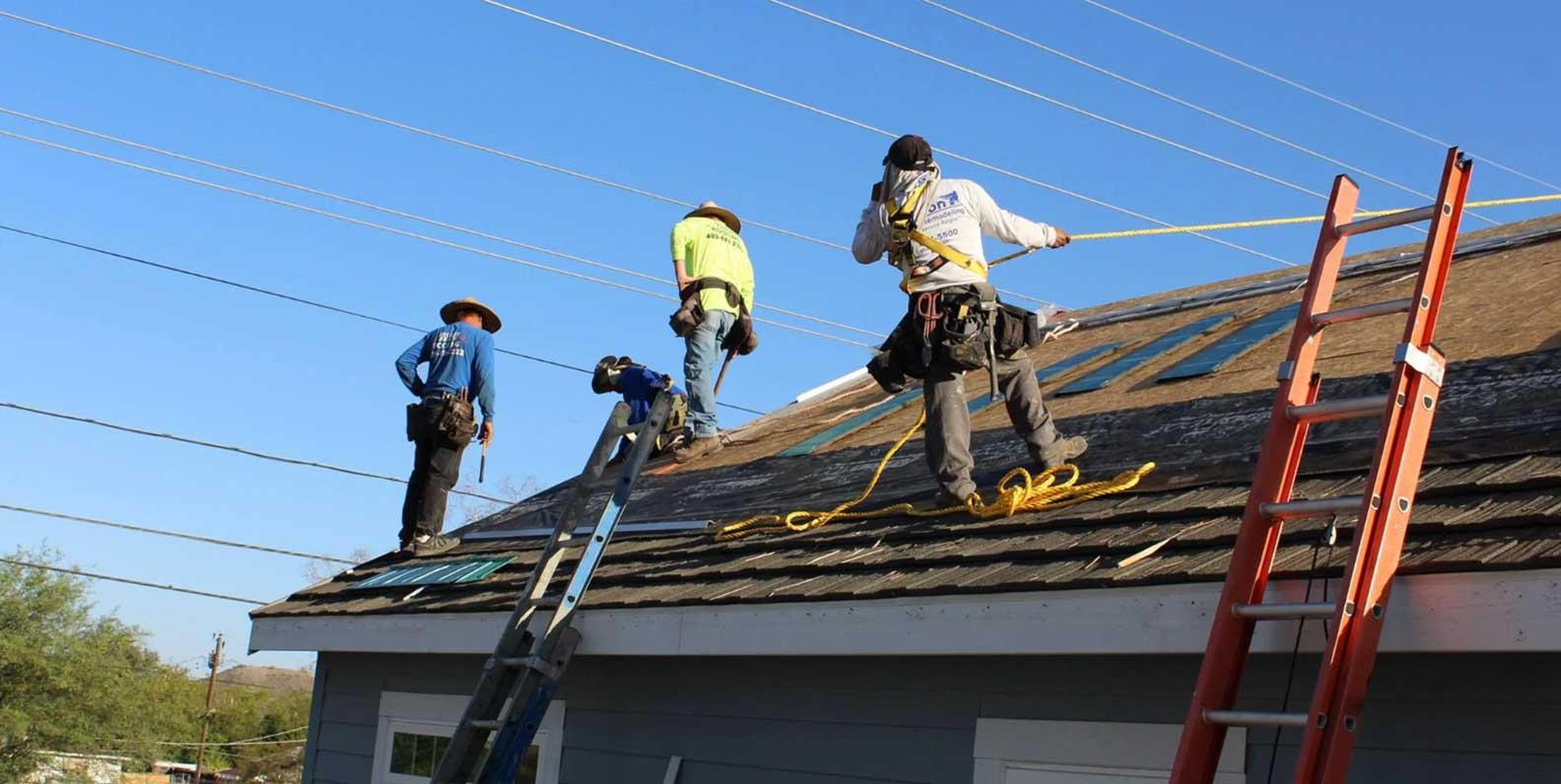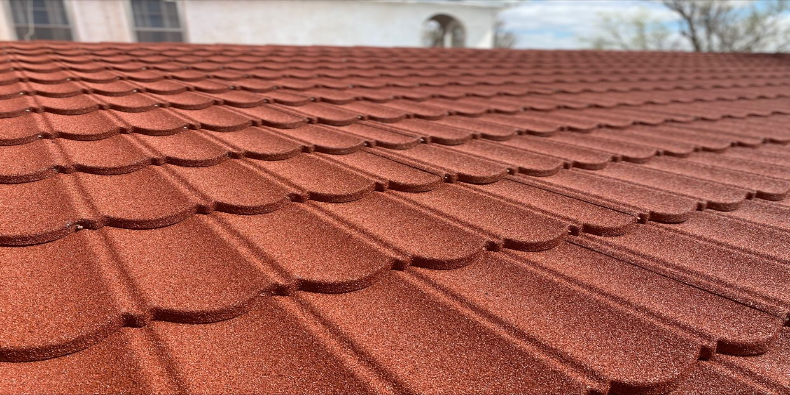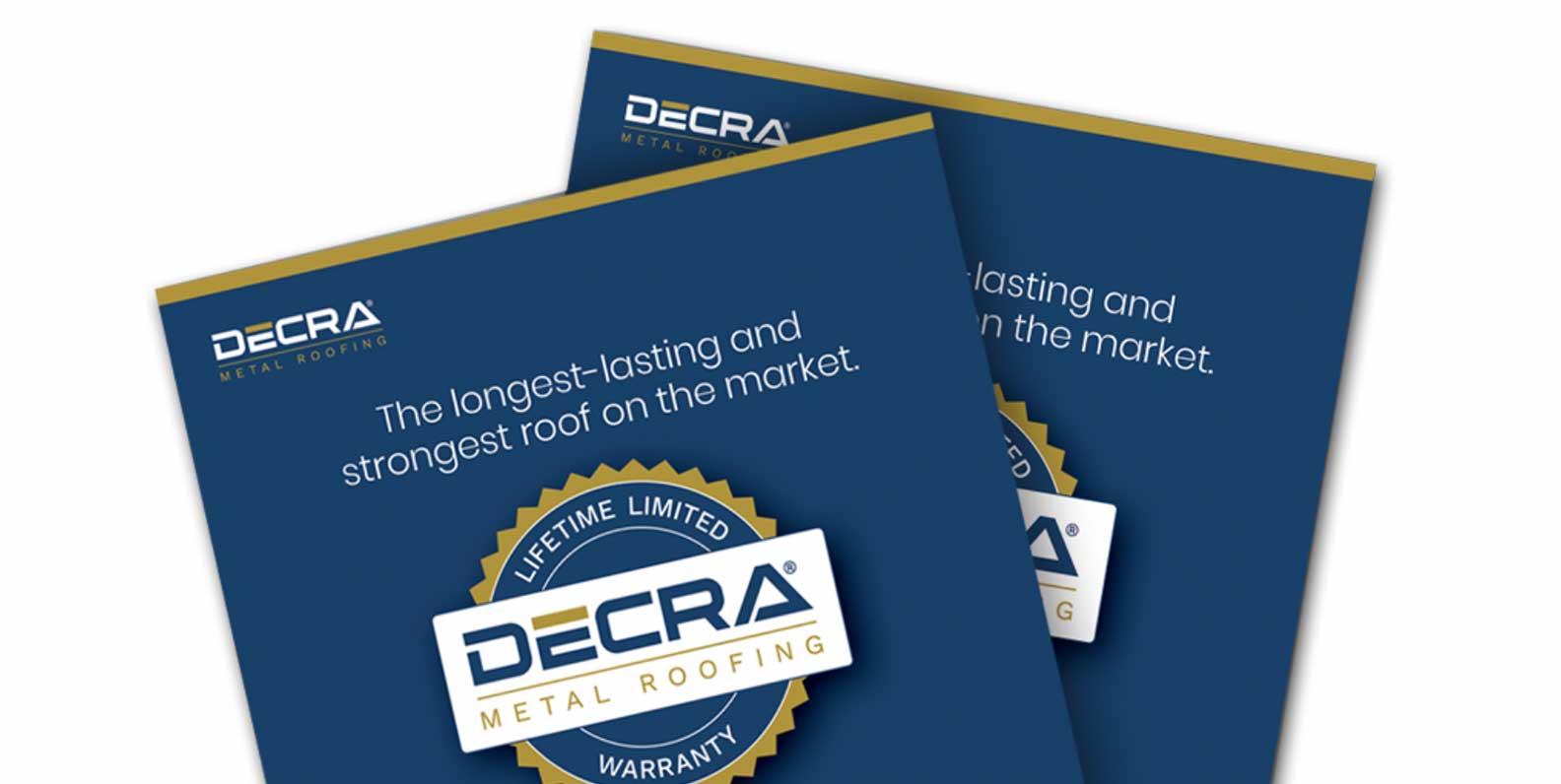If someone’s come knocking on your door recently offering a free roof inspection, you’re not alone. With extreme weather on the rise, roofing contractors are going door to door in neighborhoods hit hardest by storms, often uncovering damage homeowners didn’t even realize was there.
But you don’t have to wait for someone to point it out. Knowing what to look for yourself is key to catching issues early (before they lead to costly repairs).
Here are seven signs of roof damage to look for:
- Missing shingles, shakes, or tiles
- Cracked, chipped, or warped roofing materials
- Granule loss
- Damaged or missing roof components, like flashing
- Damage to the roof decking or interior of your home
- A sagging roofline
- Evidence of ice damming
In this post, we’ll explain what each sign means, share additional red flags to be aware of, and discuss why now might be the right time to consider a replacement before storm season begins.
1. Missing Shingles, Shakes, or Tiles
If you, or your roofing contractor, notice missing shingles, it’s probably due to wind damage. Older roofs, or those that weren’t installed properly, are especially vulnerable during high-wind events, when strong gusts can easily tear away shingles, shakes, or tiles.
In hurricane-prone areas, entire sections of roofing can come loose due to a phenomenon called wind uplift. This occurs when the air pressure inside your home becomes greater than the pressure outside, creating a lifting force that can peel roofing away.
To prevent this from happening, it’s important to choose a roofing material designed to withstand extreme weather. For example, DECRA stone-coated metal roofing is designed to resist wind uplift at wind speeds up to 120 miles per hour. If hurricanes or tornadoes are a threat in your region, DECRA could be a great choice for you.
2. Cracked, Chipped, or Warped Roofing Materials
Roofing materials can crack, chip, or pit from impacts caused by falling tree branches or hailstones. Clay tiles are especially vulnerable to this type of impact. In fact, even the simple act of walking on them can lead to damage.
Warping or cupping is another common issue, particularly with asphalt shingles. Over time, prolonged exposure to moisture can cause shingles to absorb water, which accelerates their deterioration and distorts their shape. In this case, metal roofing offers a more durable solution. DECRA carries the highest UL impact resistance rating and is warrantied against damage from hailstones up to 2.5 inches in diameter, offering peace of mind in unpredictable weather.
3. Granule Loss
If you look closely at asphalt shingles, you’ll see they’re coated with small granules made of mineral or stone. The granules:
- Protect the roof from harsh weather
- Enhance fire resistance
- Add color and texture to the shingles
Over time, exposure to weather and ultraviolet rays from the sun causes these granules to wear away. As they erode, the shingles lose much of their protective qualities, leaving your roof more vulnerable to damage from rain, wind, and even fire.
Unlike asphalt shingles, DECRA offers a more durable solution. In fact, the origins of DECRA’s stone-coated technology date back to World War II, when a protective coating was developed to camouflage metal roofs on military buildings. This coating bonded so tightly to the metal that it was nearly impossible to remove—even after more than a decade of exposure to harsh weather. Today, DECRA has enhanced this original formula with multi-layered steel and advanced zinc-aluminum alloy coatings, offering long-lasting performance and better resistance to issues like granule loss compared to traditional roofing materials.
4. Damaged or Missing Roof Components
If you notice missing shingles, tiles, or shakes, there’s a good chance other roofing components have been affected as well. High winds and severe weather can loosen or dislodge elements like flashing, ridge vents, and sealants, leaving your roof vulnerable to leaks and deterioration.
To spot this type of damage, inspect key areas of the roof. Look at the peak of the roof (the ridge), and examine the areas around vents, flues, chimneys, dormers, and other protrusions. For more insight into damage to the roofline, be sure to read the section below on “Ice Damming.”
5. Damage to the Roof Decking or Interior of Your Home
Beneath your roofing material lies the roof decking, a wooden foundation that supports the roof and provides a base for attaching shingles, tiles, or panels. Between the decking and outer layers, there’s usually an underlayment that adds an extra layer of protection against moisture. If your outer roofing is damaged, water can seep through and damage both the underlayments and decking below. Before repairing or replacing the surface materials, it’s important to address any damages to these layers first. Common signs of damage include:
- Exposed wood or underlayment
- Chipped or cracked decking
- Holes in the roof decking
- Mold, lichens, or mushroom growth
- Water stains on wood surfaces
If there’s damage to the underlayment, even small gaps can allow moisture to make its way into your home. Signs of interior water damage may include brown or yellow stains on ceilings or walls, warped or sagging ceilings, musty or damp odors, visible mold or mildew growth, or dripping sounds.
DECRA is specifically engineered to prevent damage caused by wind-driven rain. Its interlocking panels and secure fastening system are built to keep water out even in storms with wind speeds up to 110 miles per hour.
6. A Sagging Roof
There’s no doubt that a sagging roof means serious trouble. It may be a constant issue or something that occurs only after heavy snowfall, but either way, it points to structural problems that need attention.
Common causes of roof sagging include:
- Inadequate structural support beneath the roofing material
- Excess weight from roofing materials, especially when combined with snow accumulation
- Multiple layers of asphalt shingles adding excessive load over time
The good news is that DECRA is lighter than many traditional roofing materials. It can handle heavy snow loads without sagging, and when installed to code, can often be installed directly over asphalt shingles without adding excessive weight to your roof.
7. Ice Damming
Ice damming happens when snow on the roof melts during warmer temperatures and the meltwater runs down towards the eaves. If the temperature drops again before the water fully drains, it can refreeze along the roof's edge, forming an ice dam. This buildup prevents water from draining properly, forcing it back under the roofing material and potentially into your home.
Common signs of ice damming include:
- Rain gutters that bend, deform, or pull away from the house
- Damage to the eaves and soffits of the roof
- Water stains or damage inside the home, especially along exterior walls near the roofline
You might even catch a dam forming in real time, which looks like a ridge of ice building up along the edge of the roofline near the gutters.
If you live in a cold climate, you can help prevent ice dams by ensuring the upper level of your home is well insulated. Non-porous metal roofs like DECRA withstand repeated freeze and thaw cycles, which helps reduce the risk of ice dam formation.
Other Reasons to Consider a Roof Remodel
While the signs above clearly indicate when it’s time for a roof replacement, many homeowners choose to remodel their roof for other practical reasons as well:
- You’re thinking about selling your home or want to build equity. Installing a metal roof can increase the value of your home up to 6%.
- Severe weather and wildfires are common in your area, and you want to get ahead of potential roof damage by choosing a roofing material with a Class A fire rating.
- You want to reduce heating and cooling costs. Installing a metal roof can help lower energy bills by up to 40%.
- Your insurance company has started performing drone inspections and is dropping coverage for homes with aging or vulnerable roofs.
- You've already dealt with missing shingles or shakes, and keeping your current roof in shape requires constant chemical treatments and repairs. Metal roofs are known for being a low-maintenance option.
One of the most compelling reasons to upgrade to metal roofing is the long-term peace of mind it brings. Metal roofs last two to three times longer than traditional materials, with a typical lifespan of 40 to 80 years. That means fewer replacements over the life of your home, and in many cases, it’s the last roof you’ll ever need to install.
Replace Your Damaged Roof with DECRA
If it’s time for a roof replacement, consider upgrading to DECRA. Request a complimentary sample to see the difference for yourself. With a variety of colors and profiles that replicate the look of traditional asphalt shingles, clay tiles, and wood shakes, DECRA offers the perfect combination of strength and style to protect and enhance your home for decades to come.







